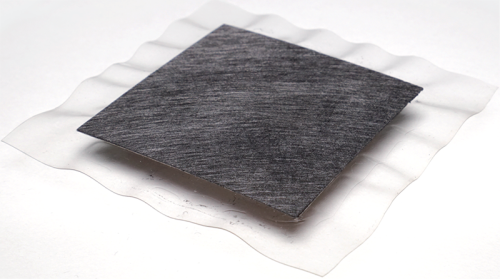The agreement formalizes recent collaboration to leverage both companies’ technological, manufacturing and commercial strengths since signing an MoU in September 2023.
PEM electrolyzers use electricity to split water into its component elements of oxygen and hydrogen. When the electricity is from a renewable energy source, the hydrogen is produced without any greenhouse gas emissions. The catalyst in PEM anode electrodes uses iridium, one of the scarcest traded metals. Consequently, solutions that reduce iridium content present a significant break-through towards the scale adoption of these technologies.

Under the agreement, Bekaert’s leading expertise in Porous Transport Layers (PTL), a key component in the MEA of water electrolyzers, will be coupled with Toshiba’s innovative iridium-saving technology for MEA, which will enable a 90% reduction in iridium usage in the production of PEM electrolyzers.
This reduction in iridium will enable a more stable supply of MEA and support the scale expansion of green hydrogen production.
Bekaert will undertake commercialization of MEA production, leveraging its global network and established manufacturing base in Belgium, to serve its hydrogen customers. Toshiba will license its iridium-saving MEA technology to Bekaert, granting them the ability to manufacture and distribute MEAs.
Meanwhile, Toshiba will focus on further enhancing its technical performance of the technology. The agreement is global, with the exception of Japan-related projects, which will be subject to a separate agreement.
Bekaert’s ultrathin metal fiber porous media are used as porous transport layers enhancing the durability and performance of electrochemical devices such as water electrolyzers for the production of green hydrogen. Bekaert has established a technology and market leadership position in Porous Transport Layers (PTL) for both PEM and AEM electrolyzers with the brandname Currento. The company is investing in the development of next-generation solutions for green hydrogen production as well as in expanding its production footprint to multiple GW capacity over the coming years.
The problem is that it still costs more to make green hydrogen than reform natural gas, the technology is in a state of flux with several possibilities to take a big chunk out of cost, so that buying right now is dubious, and that legislation and tax breaks/ subsidies are being delayed and are unclear.
In addition, it is totally unclear if natural hydrogen will be a thing at all, and possibly very large with unbeatable costs, so hitting demand for electrolysers.
I would point out though that all these issues are the problems of the massive, staggering success in reducing the cost of renewables.
In addition I would point out that the issues of losses in green hydrogen production and use are grossly exagerrated.
Even present electrolysers can hit 75% or so, and 80-85% efficiency is well within sight of several of the slightly more advanced tech offerings, with SOFC from the likes of Topsoe Haldor already there, or better.
Then the assumption is that it is used in the most inefficient way imaginable, when fuel cells at point of use are 90% plus efficient for thermal plus electric.
This avoids most of the losses in present supplies, with no need to throw energy away in cooling stacks, and the overall system is perhaps twice as efficient as present energy use.
And of course where it is practical and the supply can more nearly meet demand then electric cables will be run, and looking at Germany they are putting high voltage underground for long distance transmission, just a Gryf was advocating, and based on couldn't care less British practice I had thought was really not a thing:
https://www.gisreportsonline.com/r/generating-clean-energy-is-the-easy-part/